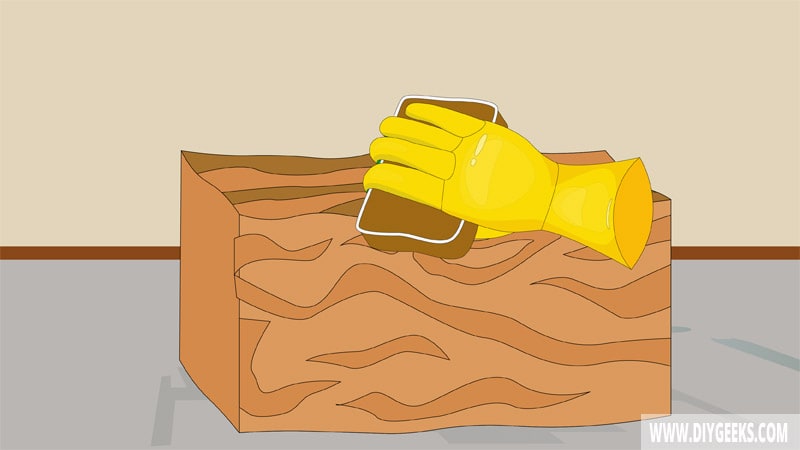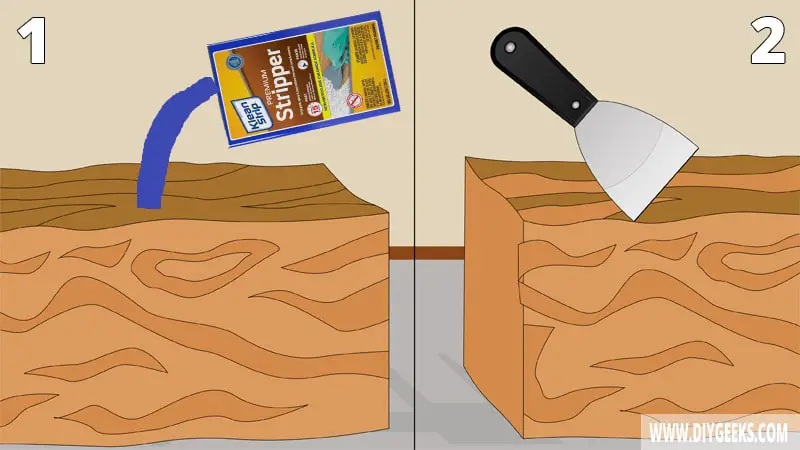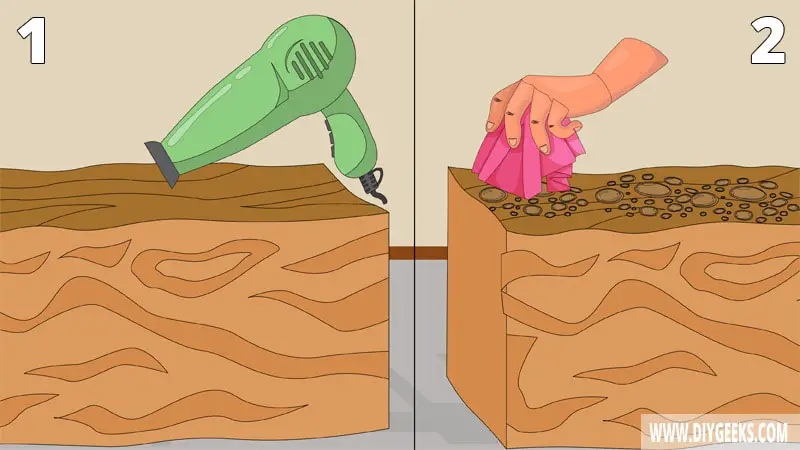Thompson’s water sealer protects porous surfaces from water and other damages by producing a water-resistant coating over them.
To remove Thompson’s water sealer from wood, use sandpaper, paint-stripping paste, or acetone.
Can You Remove Thompson’s Water Seal Without Removing Paint Underneath?
You can remove Thompson’s water seal without removing paint underneath by using fine-grit sandpaper (220-grit) or paint-stripping paste.
Use the fine-grit sandpaper to remove the water sealer and stop sanding once you reach the paint. Fine-grit sandpaper isn’t abrasive enough to remove multiple sealer or paint coats immediately.
If you apply a light paint-stripping paste over the paint finish and remove it fast enough, it removes the water sealer coating without affecting the paint underneath.
Apply the paint-stripping paste over the finish, wait 20 minutes, and remove the paste. If there’s some water sealer left on the surface, re-apply the paint-stripping paste and wait 20 minutes before removing it. Do this until the water sealer is removed.
How To Remove Thompson’s Water Seal From Wood?
To remove Thompson’s water seal from wood, do the following things.
- Use Sandpaper.
- Use Paint-stripping paste.
- Use Acetone.
1. Use Sandpaper

Use sandpaper’s abrasive side to gradually wear off the Thompson’s water sealer coating. The sandpaper removes the existing finish and makes the surface paint-ready immediately by removing imperfections and bumps.
The tools you need for this method are listed below.
- 180-220 grit sandpaper
- A vacuum or duster
- A pair of gloves
- Rags
To sand off Thompson’s water sealer, do the following things.
- Clean the finish to remove dust and dirt.
- Use fine-grit sandpaper (220-grit) if you don’t want to remove the paint underneath.
- Use medium-grit sandpaper (100-grit) if you want to remove the sealer and paint.
- Keep sanding until the finish is removed.
- Remove the dust and allow the wood to settle.
2. Use a Paint-stripping Paste

A paint-stripping paste refers to a product that removes old and unwanted paint coatings from surfaces. The paste contains solvents that actively soften or dissolve the paint coating, making it easier to scrape or remove it.
The paint-stripping paste works by penetrating a paint finish, dissolving the particles and binder, and making it softer so you can scrape it off.
The tools you need for this project are listed below.
- Paint-stripping paste
- Paint Scraper.
- Clean rags
- Paintbrushes
- Mineral spirits
- A wire sponge
- Sandpaper
Here is a guide for this method:
- Clean the finish with a dry rag to remove dust and dirt.
- Apply the paint-stripping paste directly over the sealed finish.
- Wait 30 minutes.
- Use a paint scraper to scrape the finish off.
- Re-apply the paint-stripping paste for leftover paint stains.
- Re-scrape the paint.
- Clean wood with warm soapy water to remove paint-stripping residue.
- Allow the wood to dry.
3. Use Acetone

Acetone is a solvent that thins and removes different paint types, sealers, and varnishes, including Thompson’s water sealer. The acetone penetrates the paint finish and dissolves it.
- Acetone
- A hairdryer
- Rags
- A paintbrush
- A plastic putty knife
- A nylon bag
- A pair of gloves
Here is a guide for this method:
- Clean the surface to remove dust and dirt.
- Use fine-grit sandpaper (220-grit) to remove the sealer topcoat.
- Clean the surface.
- Apply acetone directly over the finish.
- Wait 30 minutes.
- Scrape the paint with a paint scraper.
- Re-apply acetone for leftover Thompson’s water sealer.
- Re-scrape the paint.
- Clean the wood with warm water to remove acetone residue.
- Allow the wood to dry.


